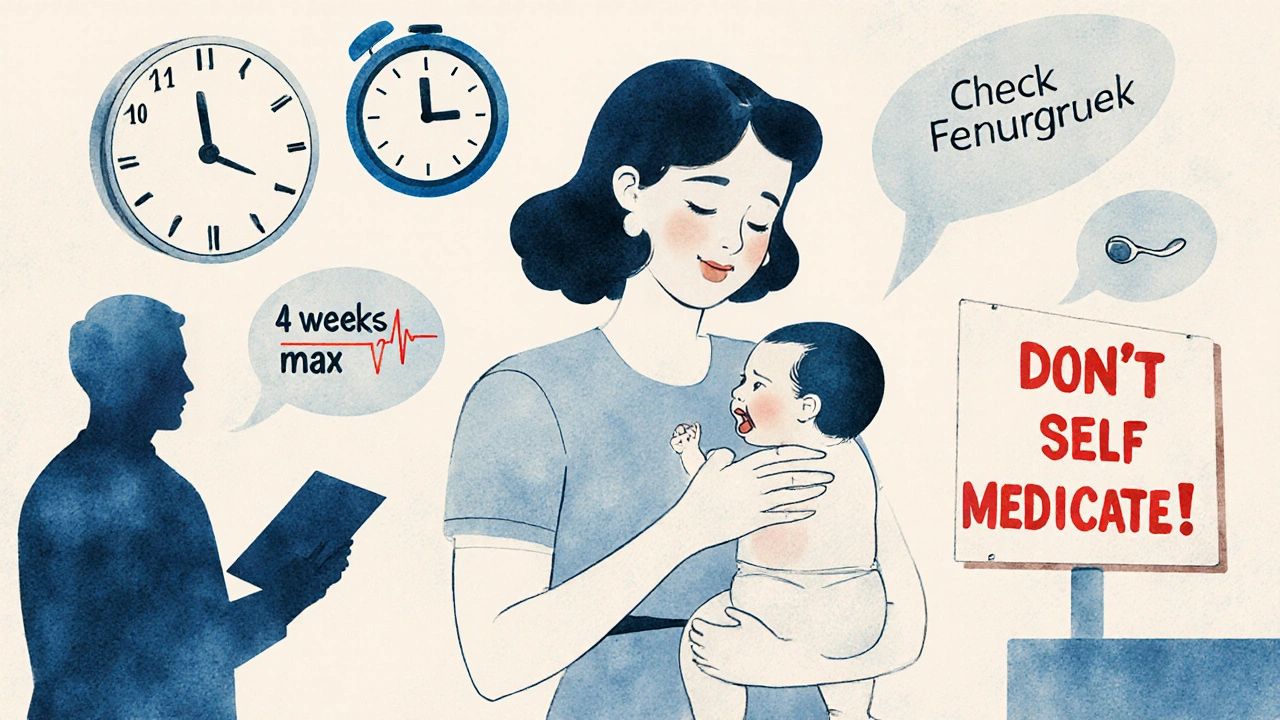The Controversy Surrounding Domperidone: Risks, Benefits, and What You Need to Know
 Oct, 30 2025
Oct, 30 2025
Domperidone is a drug that helps with nausea and vomiting, and it’s been used for decades to treat digestive issues like gastroparesis and reflux. But in many countries, including the U.S., Canada, and Australia, it’s either banned or tightly restricted. In others, like New Zealand and parts of Europe, it’s still available-often without a prescription. So why the split? And is it safe to use if you’re considering it for yourself or a loved one?
What Domperidone Actually Does
Domperidone works by blocking dopamine receptors in the brain and gut. Unlike metoclopramide, another common anti-nausea drug, it doesn’t cross the blood-brain barrier easily. That means it’s less likely to cause drowsiness or movement disorders like tardive dyskinesia. Instead, it speeds up stomach emptying and reduces feelings of fullness or nausea. It’s commonly prescribed for people with diabetic gastroparesis, chemotherapy-induced nausea, or even severe morning sickness during pregnancy-though not always approved for that last use.
Many people turn to domperidone because other options don’t work or cause worse side effects. For example, someone with chronic nausea after gastric surgery might find relief with domperidone when metoclopramide makes them feel worse. In New Zealand, where it’s available over the counter in pharmacies, it’s a go-to for parents dealing with babies who spit up excessively or adults with functional dyspepsia.
The Heart Risk That Sparked the Ban
The controversy started in the early 2000s when health agencies noticed a pattern: people taking high doses of domperidone, especially over long periods, were having rare but serious heart rhythm problems. Specifically, a condition called QT prolongation, which can lead to torsades de pointes-a potentially fatal irregular heartbeat.
In 2004, Health Canada issued a warning after reviewing 21 cases of cardiac arrest linked to domperidone. By 2014, they banned its use for non-prescription purposes and restricted it to short-term use at the lowest effective dose. The U.S. FDA followed suit, blocking importation and warning that domperidone wasn’t approved for any use in the country. The European Medicines Agency also limited its use, saying it should only be used for nausea and vomiting, not for increasing milk supply.
Here’s the catch: most of those heart events happened in people taking more than 30 mg per day, often for months or years. Many were also taking other drugs that affected heart rhythm, like certain antibiotics or antidepressants. The risk isn’t zero, but it’s also not common-especially at standard doses under 10 mg three times a day.
Off-Label Use: Lactation and Misuse
One of the biggest drivers of domperidone’s popularity-and its controversy-is its off-label use to increase breast milk supply. While it’s not approved for this purpose anywhere, many lactation consultants and breastfeeding support groups recommend it. Studies show it can raise prolactin levels and improve milk volume in some women, especially those with low supply due to hormonal imbalances or premature birth.
But here’s where it gets risky: women often self-medicate. They buy domperidone online from overseas pharmacies, sometimes without knowing the correct dose or duration. Some take 20 mg or more daily for months. There are documented cases of women developing arrhythmias after using it for lactation, even when they had no prior heart issues.
Pharmacists in New Zealand are required to counsel patients on this risk. But not everyone listens. A 2023 review in the New Zealand Medical Journal found that nearly 40% of women using domperidone for lactation were unaware of the heart risks-and most had no baseline ECG before starting.

Who Should Avoid Domperidone?
Domperidone isn’t safe for everyone. You should not take it if:
- You have a history of heart rhythm disorders, including QT prolongation
- You’re taking other medications that affect heart rhythm (like erythromycin, fluconazole, or some antidepressants)
- You have liver disease-domperidone is processed by the liver, and impaired function raises blood levels
- You’re over 60 and have other risk factors for heart disease
- You’re pregnant and not under medical supervision
Even if you’re young and healthy, taking domperidone for more than a few weeks without monitoring is risky. A simple ECG before starting-and one after a month-can catch early signs of QT prolongation. Blood tests to check liver function are also recommended if you’re on it long-term.
Alternatives That Work
If you’re avoiding domperidone because of the risks, there are other options. For nausea:
- Metoclopramide works similarly but carries a higher risk of neurological side effects. Best for short-term use.
- Ondansetron (Zofran) is often used for chemotherapy or post-op nausea. It’s more expensive but has a cleaner cardiac profile.
- Vitamin B6 combined with doxylamine is the first-line treatment for morning sickness in many countries, including the U.S.
For low milk supply, non-drug options matter just as much:
- More frequent nursing or pumping
- Proper latch and positioning
- Galactagogues like fenugreek or blessed thistle (though evidence is mixed)
- Addressing underlying stress, sleep deprivation, or thyroid issues
Domperidone might help, but it shouldn’t be the first or only tool. Many women improve milk supply with consistent support and time-no pills needed.

Why Is It Still Available in Some Places?
Regulators don’t agree on the risk-benefit balance. In New Zealand, the Medsafe agency allows domperidone to be sold without a prescription because they believe the benefits outweigh the risks when used correctly. They require pharmacists to provide written warnings and limit pack sizes to 30 tablets.
Meanwhile, in the U.S., the FDA says the drug’s risks aren’t well enough understood to approve it. But because it’s available online, Americans still get it-often from unregulated sources. A 2022 study found that 72% of domperidone sold online to U.S. customers didn’t match the labeled dosage. Some contained no active ingredient at all.
The truth? Domperidone isn’t a miracle drug. It’s a tool-with clear limits. When used short-term, at low doses, and under supervision, it can be helpful. But when misused, it can turn dangerous.
What to Do If You’re Considering Domperidone
If you’re thinking about using domperidone-for nausea, gastroparesis, or lactation-here’s what to do:
- Don’t buy it online. Use a licensed pharmacy that requires a consultation.
- Ask your doctor or pharmacist for a baseline ECG before starting.
- Stick to 10 mg three times a day-never more unless supervised.
- Use it for no longer than four weeks without a review.
- Watch for symptoms like dizziness, palpitations, or fainting. Stop immediately and seek help.
- Explore non-drug options first, especially if you’re breastfeeding.
The goal isn’t to scare you away from domperidone. It’s to make sure you use it wisely. Millions have taken it safely. But every year, someone learns the hard way that this drug isn’t harmless. Knowledge is your best protection.
Is domperidone safe for breastfeeding mothers?
Domperidone can help increase milk supply in some women, but it’s not without risks. It passes into breast milk in small amounts, and while no major harm has been proven in babies, the mother’s heart health is the bigger concern. Use only under medical supervision, at the lowest dose (10 mg three times daily), and avoid long-term use without an ECG. Many mothers improve supply with better latch, more frequent feeding, and support-no medication needed.
Why is domperidone banned in the U.S.?
The FDA banned domperidone because of reports of serious heart rhythm problems, especially at high doses or with long-term use. It’s not approved for any use in the U.S., and importing it is illegal. The agency says the risks-particularly for people with existing heart conditions or those taking other medications-outweigh the benefits, especially since safer alternatives exist.
Can domperidone cause weight gain?
Weight gain isn’t a direct side effect of domperidone. But because it reduces nausea and improves appetite, some people eat more and gain weight as a result. This is more common in people using it for gastroparesis or chronic nausea who finally start eating regularly again. It’s not the drug causing fat storage-it’s improved digestion leading to better nutrition.
How long does it take for domperidone to work?
For nausea, most people notice improvement within 30 to 60 minutes after taking a dose. For stomach emptying issues like gastroparesis, it may take a few days to a week to see consistent results. If you’re using it for milk supply, it usually takes 3 to 7 days to notice any change, and full effect can take up to two weeks.
Can you drink alcohol while taking domperidone?
It’s best to avoid alcohol. While domperidone doesn’t directly interact with alcohol like some other medications, alcohol can worsen nausea, slow stomach emptying, and increase the risk of dizziness or low blood pressure. Combining the two may make symptoms worse instead of better.
If you’re managing chronic nausea, low milk supply, or digestive discomfort, domperidone might seem like a quick fix. But it’s not a shortcut. It’s a medication with real risks and real limits. The best outcomes come not from taking the pill, but from understanding when-and when not-to use it.

Wayne Keller
October 31, 2025 AT 21:21Domperidone’s a tool, not a magic pill. I’ve seen people use it for gastroparesis and it literally changed their lives - but only when they followed the rules: low dose, short term, ECG checked. No online pharmacies. No guessing. Just smart, cautious use.
Shana Labed
November 1, 2025 AT 16:41OMG I just found out my cousin took domperidone for lactation and her milk supply DOUBLED in 3 days?? 🤯 Like, she was crying because she thought she couldn’t breastfeed and now her baby’s thriving?? But then she got scared after reading this and went to her doc for an ECG - BEST DECISION EVER. We need more awareness, not fear-mongering!! 💪🍼
Vishwajeet Gade
November 2, 2025 AT 00:02USA always overreacts. In India we use domperidone for kids with vomiting since 90s. No one dies. You guys panic over every pill. Your pharma companies control your FDA. Simple.
Norman Rexford
November 3, 2025 AT 07:19Look, I’m not saying domperidone’s evil - but let’s be real. If it was so safe, why’d the FDA block it? Why’d Canada ban it? Because they actually care about people. Not like some countries where you can just walk into a pharmacy and grab a heart-risk pill like it’s gum. We’re not in the 1980s anymore.
Casey Crowell
November 4, 2025 AT 05:37Life’s about balance, folks. 🌱 Domperidone isn’t the villain - ignorance is. People take it blindly? Yeah, that’s on them. But the same people who panic about this drug will happily pop 4 Advil a day for years. Double standards much? ❤️🩹
Shanna Talley
November 5, 2025 AT 22:09For moms struggling with milk supply - you’re not failing if you don’t use a pill. Your body is already doing something incredible. Domperidone might help, but so can rest, support, and a warm cup of tea in the 3am dark. You’re enough. No prescription needed.
Samuel Wood
November 6, 2025 AT 19:29It’s fascinating how the FDA’s stance reflects a deeper epistemological crisis in Western pharmacology - the prioritization of hypothetical risk over empirical benefit. Domperidone’s marginal cardiac risk pales against the societal cost of maternal distress and formula dependency. Yet we legislate fear, not function.
ridar aeen
November 6, 2025 AT 21:55My sister took domperidone for 6 weeks while breastfeeding. Got her ECG. Took 10mg TID. No issues. But she also pumped every 2 hours, ate like a horse, and slept 4 hours a night. The drug helped - but the real magic was the support system. Don’t reduce this to a pill. It’s about care.